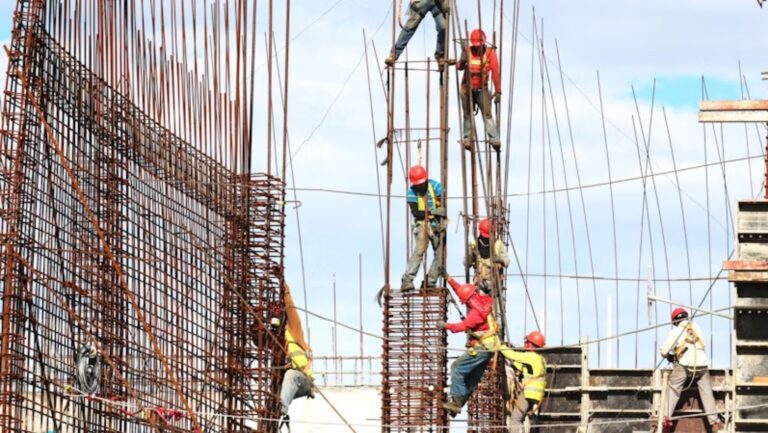Looking to insulate your construction projects from contractor default?
If you’re a construction professional, you know the horror stories all too well. You award a huge contract, the contractor mobilizes, and then… it all falls apart. Vanishes. Shoddy work. Can’t complete the job.
Let’s be real. If you don’t have the right protections in place, you’re out hundreds of thousands – or even millions – in losses. The good news?
Construction performance bonds are your safety net for contractor disasters.
Inside, you’ll learn:
- What Are Performance Bonds and Why Construction Professionals Need Them?
- The Miller Act and Legal Requirements Every Pro Should Know
- How Performance Bond Costs Really Work
- The Smart Way To Get Performance Bonds for Your Projects
What Are Performance Bonds and Why Construction Professionals Need Them?
Performance bonds in construction are surety bonds that guarantee the contractor will perform the work as specified in the contract.
In essence, they’re insurance policies for project completion. If your contractor bails, the surety company that backs the bond has to step in and either finish the work or compensate you for the losses.
Performance bonds involve three parties:
- The Principal (the contractor who needs the bond)
- The Obligee (the project owner, i.e. you, who requires the bond)
- The Surety (the company that issues the bond and guarantees the contractor’s performance)
Sounds simple enough, right?
But here’s the thing most construction pros don’t realize…
Performance bonds do more than just cover incomplete work. They also vet that you’re working with qualified contractors. Why? Because surety companies perform thorough evaluations of a contractor’s capacity, character and capital before issuing bonds.
The point is, when you require performance bonds, you’re automatically screening out unqualified contractors who can’t get bonded.
The Miller Act and Legal Requirements Every Pro Should Know
Here’s a fact that might surprise you…
Performance bonds are mandatory on all federal construction projects worth over $100,000, under the Miller Act. And I’m not talking optional here – it’s the law.
Signed into law in 1935, the Miller Act protects the federal government (and therefore the taxpayers) through these third-party guarantees. But here’s the thing…
Most states have their own versions of the Miller Act called “Little Miller Acts” that also apply to state and local government construction contracts.
Some examples:
- Texas requires bonds on projects over $25,000
- Nevada has a $100,000 threshold
- Florida mandates bonds on public projects over $100,000
The bottom line? If you work on public construction projects, you’re going to need performance bonds. Many private owners are also requiring them these days to protect their investments.
And you need to know about compliance…
Less than 1% of construction projects in the highway industry have had contractor defaults.
That low default rate shows the bonding system works – it filters out bad actors before problems arise.
How Performance Bond Costs Really Work
Performance bond costs. AKA the part that trips up most construction professionals…
Bond costs aren’t static prices. They vary, but you should budget 1.5% to 3.5% of the total bond value for premium.
The premium is based on a number of factors, such as:
- Contractor’s creditworthiness (good credit = lower rates)
- Financial stability (healthy = better pricing)
- Project history (track record = lower premiums)
- Contract duration (longer = higher risk)
- Project complexity (specialized = higher rates)
But here’s something most folks don’t know…
The surety industry issued approximately $3.5 billion in performance bonds in a recent year, with the average premium at 0.64%.
The take? Since performance bonds equal 100% of contract values, this suggests that more than half of all construction work in the U.S. is protected by performance bonds.
Massive market penetration!
On large contracts over $600,000, expect to provide detailed financial statements for underwriting. The surety wants proof you can cover the financial obligations.
Collateral? Some contractors may need it, especially those with lower credit scores or large bond amounts. But most established contractors can qualify without collateral.
The Smart Way To Get Performance Bonds for Your Projects
The process of getting performance bonds can be straightforward if you learn more about performance bonds and follow these steps.
Here’s how to go about it:
Find the Right Surety Partner
Do your research on surety companies specializing in construction bonds. Look for strong financial ratings and experience in your project type. Some specialize in commercial construction, others in infrastructure work.
Prepare Your Financial Documentation
You will need to present the following financial documentation:
- Audited financial statements for the past three years
- Work-in-progress schedules for ongoing projects
- Bank references that demonstrate financial strength
- Completed project references to prove your track record
- Resume of key personnel involved in the project
Submit Your Application
Most surety companies can give you a quote in 24-48 hours for a straightforward application. Be upfront about challenges – sureties like transparency.
Review Terms and Conditions
Review all bond terms carefully, including coverage, claims process, renewal terms, exclusions, and conditions. Understand all the fine print.
Real World Performance Bond Benefits
Performance bonds are game-changers for construction professionals…
Protection Beyond Insurance: Performance bonds cover completion. Not just damages. If your contractor defaults, the surety must see the work completed.
Competitive Advantage: Requiring bonds instantly eliminates unqualified bidders. You’re only left with serious, bonded contractors who can actually deliver.
Financial Security: You’re covered up to the full bond amount, typically equal to the entire contract value.
Peace of Mind: You sleep better at night knowing if something goes wrong, you have a financial backstop to complete your project.
But wait, here’s the best part…
Performance bonds also protect subcontractors and suppliers. When the prime contractor has a performance bond, it means payment bonds are often in place too. That ensures all parties get paid, even if the main contractor fails.
Performance Bond Best Practices
Smart construction professionals follow these best practices:
Bundle with Payment Bonds: Performance and payment bonds benefit most projects. Bundling them together often reduces overall costs.
Understand Default Procedures: Know what triggers a bond claim and what documentation is needed. Act quickly to minimize losses.
Build Surety Relationships: Work to develop long-term relationships with your sureties for better terms and faster approvals.
Common obstacles include contractors who can’t get bonded (which is good for you) and cost objections. Surety costs are generally built into contractor bids.
Final Thoughts on Your Performance Bond Strategy
Performance bonds in construction aren’t just a regulatory requirement – they’re a smart business practice and protection benefitting everyone involved in construction projects.
They protect project owners from contractor default, but they also vet that only qualified contractors are able to compete for work. The result is a more stable, predictable construction environment.
The data tells the story. With default rates below 1% and over half of U.S. construction protected by bonds, the system works. For construction professionals, the question isn’t if to use performance bonds, but how to use them most effectively.
Surety costs, typically 1.5-3.5% of contract value, may seem like an expense. But the benefit is 100% of your project’s value. That’s excellent risk management.





